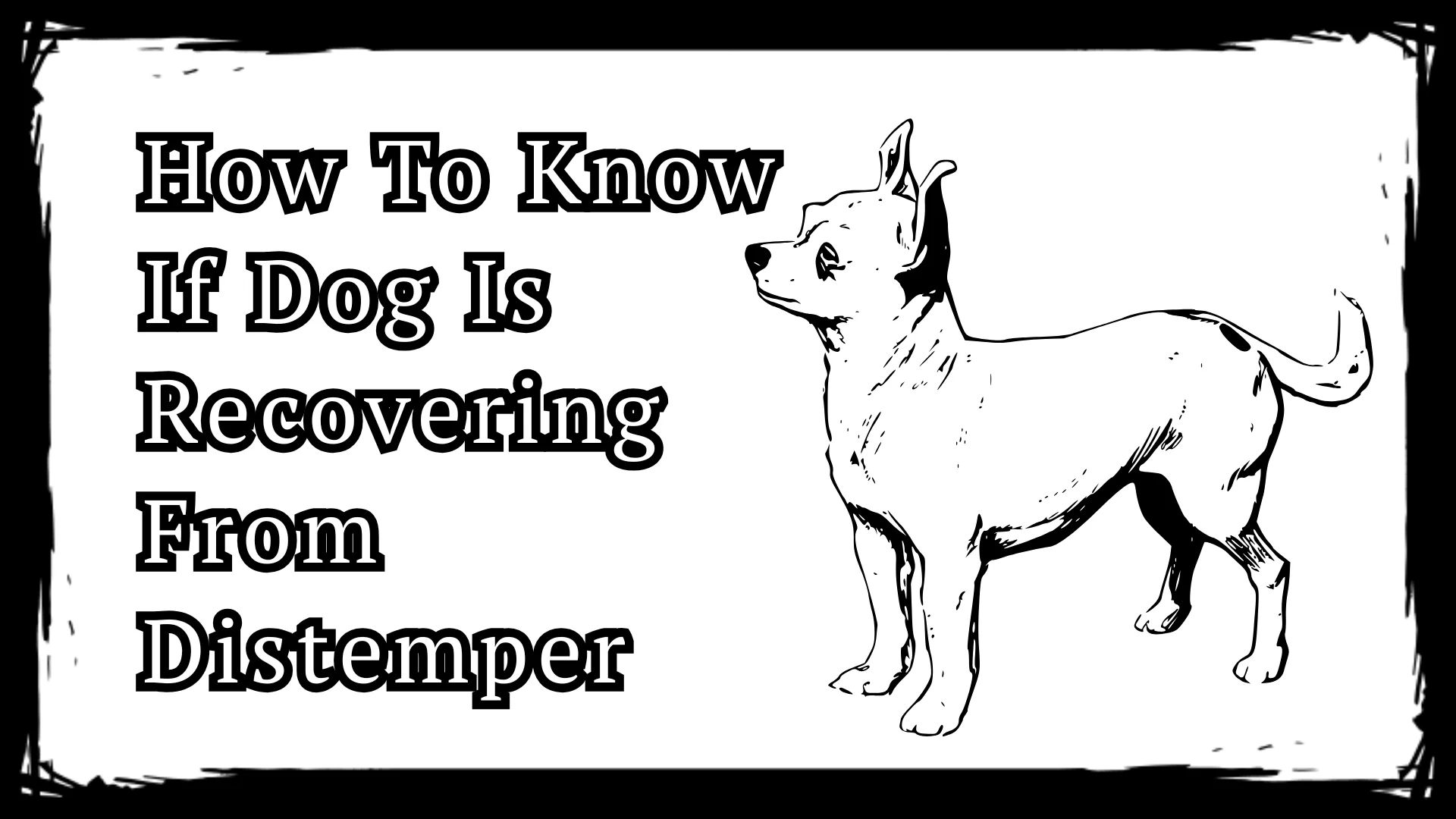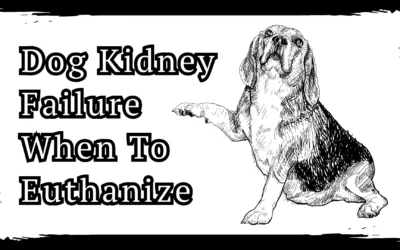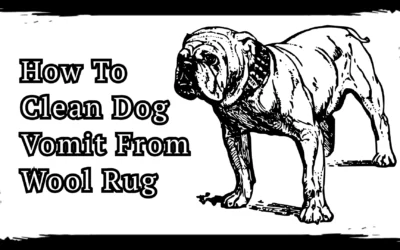How to know if dog is recovering from distemper can be confusing for many pet owners. Distemper is a dangerous virus, but with proper care, recovery is possible.
A dog is likely recovering from distemper if it shows increased appetite, more energy, and reduced symptoms such as fever and nasal discharge. Tremors may also lessen.
This guide will explain the early signs of recovery, how to monitor progress, and what steps to take to support your dog’s healing at home.
What Is Canine Distemper, and Why Is It So Dangerous?
Canine distemper represents one of the most serious viral infections affecting dogs worldwide, earning its reputation as a devastating disease that strikes fear into the hearts of pet owners. This highly contagious viral infection attacks multiple organ systems simultaneously, creating a complex medical emergency that threatens your dog’s life on several fronts.
The distemper virus belongs to the same family as measles and targets the respiratory, gastrointestinal, and nervous systems with ruthless efficiency. What makes this disease particularly dangerous is its ability to weaken the immune system while simultaneously attacking vital organs, creating a perfect storm of health complications that can prove fatal without proper intervention.
What Causes Distemper in Dogs
Canine distemper spreads through
- Airborne Transmission: Spreads through droplets when infected dogs cough, sneeze, or bark.
- Contaminated Surfaces: Virus can linger on shared food bowls, water dishes, and surfaces.
- High-Risk Groups:
- Young puppies
- Unvaccinated dogs
- Immunocompromised animals
- Highly Contagious & Deadly: Canine distemper is a serious, potentially fatal disease that spreads quickly.
Distemper Symptoms
Early Symptoms (Often Misleading)
Fever
Lethargy
Loss of appetite
Eye and nose discharge
Advanced Symptoms
Difficulty breathing
Vomiting and diarrhea
Neurological issues:
- Muscle twitching
- Seizures
Detection Challenge
Early signs mimic common illnesses, making early diagnosis difficult.
How Long Can a Dog Live with Distemper
Without treatment, distemper proves fatal in most cases, with death typically occurring within 2-4 weeks of symptom onset. However, with aggressive veterinary intervention and supportive care, many dogs can survive and recover, though the timeline varies significantly based on individual factors and disease severity.
How Long Does Distemper Take to Kill a Dog
The progression from infection to death can vary dramatically. In acute cases, particularly in young puppies, death may occur within days. Adult dogs with stronger immune systems may survive several weeks, but without proper treatment, the mortality rate remains devastatingly high at 80-90%.
You can check your dog’s age with our free calculator.
The Challenges of Diagnosing and Treating Distemper
Diagnosing distemper presents significant challenges for veterinary professionals due to the disease’s ability to mimic numerous other conditions. The virus affects multiple body systems, creating a complex symptom profile that can confuse even experienced veterinarians during initial examinations.
Laboratory testing provides the most reliable diagnosis, but results often take time when immediate treatment decisions are taken. Veterinarians frequently must start treatment based on clinical signs and known exposure history while awaiting confirmatory test results.
Early Symptoms of Distemper in Dogs
Earliest Symptoms (Often Overlooked)
- Slight fever
- Mild lethargy
- Reduced appetite
- Clear nasal discharge
Progressing Symptoms (Within Days)
- Thick, colored discharge from the eyes and nose
- Persistent coughing
- More pronounced fever
Important Note
- Early signs can be easily mistaken for a mild illness, delaying proper treatment.
Why Treatment Is Difficult
Distemper treatment proves challenging because no specific antiviral medicine exists to combat the virus properly. Veterinary professionals must rely on supportive care to help the dog’s immune system fight the infection while managing the various symptoms as they arise.
Distemper Treatment
Treatment focuses on preventing secondary bacterial infections, maintaining hydration, controlling fever, and supporting organ function. This multi-faceted approach requires intensive monitoring and frequent adjustments based on the dog’s changing condition.
Canine Distemper Treatment at Home
While professional veterinary care remains essential, home supportive care plays a crucial role in recovery. This includes maintaining proper nutrition, ensuring adequate hydration, providing comfortable rest areas, and monitoring for changes in condition that require immediate veterinary attention.
What Are the Early Signs of Recovery from Distemper?
Recognizing the earliest signs of recovery provides hope during this challenging period and helps guide ongoing treatment decisions. The first positive indicators often appear subtle but represent significant milestones in your dog’s healing journey.
Read More: Does My Dog Know I’m Sick
Temperature Stabilization Shows Promise
- Key Recovery Sign: The dog’s body temperature returns to normal (101°F to 102.5°F).
- During Acute Illness: The Dog may experience dangerous fever spikes. High, fluctuating temperatures are common and can be life-threatening.
- Improvement Indicator: Recovery is likely to start when the temperature stabilizes without dramatic fluctuations.
Appetite Returns with Renewed Interest
A recovering dog demonstrates genuine interest in food after days or weeks of complete appetite loss. This manifests as a voluntary approach to food bowls, consumption of appropriate portion sizes, and renewed interest in favorite treats that previously held no appeal.
Observable Changes During Recovery
Respiratory System Improvements
The respiratory symptoms of distemper often prove most distressing for both dogs and owners. Positive recovery indicators include dramatically reduced coughing frequency, clear nasal discharge instead of thick secretions, normal breathing patterns, and absence of wheezing sounds.
Gastrointestinal Recovery Signs
Digestive system recovery shows through normalized bowel movements, reduced vomiting episodes, the ability to retain food and water, and comfortable positioning without the hunched posture indicating abdominal pain.
Neurological Function Enhancement
Neurological improvements often take the longest to appear but represent crucial recovery milestones. These include reduced seizure frequency, improved coordination, better response to stimuli, and decreased involuntary muscle movements.
What Role Do Diet and Care Play During Recovery?
Proper nutrition and environmental management significantly impact recovery success and timeline. The recovering dog’s body requires specific nutritional support to rebuild damaged tissues and restore normal organ function.
Optimizing Diet and Environment for Recovery
Recovery nutrition should focus on easily digestible, high-quality protein sources that support tissue repair without overwhelming the compromised digestive system. Small, frequent meals prove more successful than large portions during the recovery period.
Environmental optimization includes maintaining comfortable temperature and humidity levels, reducing stress-inducing stimuli, providing clean, comfortable resting areas, and ensuring adequate ventilation without drafts.
How Long Does Recovery from Distemper Take?
Recovery timelines vary significantly based on multiple factors, but understanding typical phases helps set realistic expectations and recognize progress milestones throughout the healing process.
Week 1-2: Critical Stabilization Period
The initial recovery phase focuses on stabilizing vital signs and preventing further deterioration. Expect gradual improvements in appetite, reduced fever episodes, and slight increases in alertness.
Week 3-4: Notable Improvement Phase
This period typically brings more obvious improvements, including significant appetite recovery, increased energy for short periods, better environmental awareness, and reduced severity of acute symptoms.
Month 2-3: Sustained Recovery Phase
Long-term recovery involves consistent maintenance of improved health markers, gradual return to normal activity levels, stable neurological function, and reduced need for intensive veterinary intervention.
Factors Affecting Recovery Time
Individual Recovery Varies
Recovery speed and outcome differ despite similar treatment plans.
Key Factors Affecting Recovery
- Age: Puppies and senior dogs often recover more slowly due to weaker immune systems.
- Overall Health: Healthy dogs before infection tend to recover faster and more fully.
- Promptness of Treatment: Early intervention leads to better outcomes and shorter recovery times.
- Virus Strain: Different strains may cause varying severity of illness.
- Vaccination History: Vaccinated dogs typically experience milder symptoms and faster recovery.
How To Know If Dog Is Recovering From Distemper

A recovering dog will gradually regain energy, show interest in food, and have a normal temperature. Symptoms such as fever, nasal discharge, and tremors start to fade. Clear breathing, normal bowel movements, and alert behavior are also signs your dog is improving and healing well.
How to Prevent Relapses After Recovery?
Preventing relapses requires ongoing vigilance and commitment to maintaining your dog’s health status after the initial recovery period. The immune system remains compromised for months following distemper recovery.
Post-Recovery Tips to Ensure Long-Term Health
Maintain strict vaccination schedules to prevent reinfection and protect against other diseases. Limit exposure to unvaccinated animals and crowded areas where infectious diseases spread easily.
Monitor for subtle health changes that might indicate developing problems before they become serious. Regular veterinary check-ups help identify potential issues early when treatment proves most effective.
Can a Dog Recover from Distemper
Yes, dogs can recover from distemper, particularly when diagnosed early and treated aggressively. Success rates vary, but with proper veterinary care and supportive home management, many dogs survive and go on to live normal, healthy lives.
Recovery depends on numerous factors, including the dog’s age, overall health, immune status, and how quickly treatment begins. While some dogs recover completely, others may experience lasting effects that require ongoing management.
How to Know If Dog Is Recovering from Distemper at Home
Monitoring your dog’s recovery at home requires careful observation of multiple body systems and behavioral changes. Keep detailed records of appetite, bowel movements, activity levels, and any concerning symptoms.
Watch for gradual improvements in energy levels, interest in surroundings, normal sleeping patterns, and reduced frequency of symptoms such as coughing or vomiting. Temperature monitoring provides objective data about recovery progress.
How to Know If Dog Is Recovering from Distemper in Humans
While distemper doesn’t directly infect humans, caregivers can assess recovery by observing their dog’s responses to human interaction. Recovering dogs show renewed interest in their owners, respond appropriately to commands, and demonstrate normal social behaviors.
Human caregivers should watch for improved eye contact, tail wagging in response to attention, and the return of pre-illness personality traits that indicate neurological recovery.
How to Prevent Distemper in Dogs
Prevention remains the most effective strategy against distemper through comprehensive vaccination programs starting in puppyhood. Core vaccines typically include distemper protection and require regular boosters throughout the dog’s life.
Avoid exposing unvaccinated dogs to areas where infected animals might have been present. Maintain good hygiene practices and ensure any new animals joining your household are vaccinated.
Behavioral Recovery Milestones: Personality Returns
Social Interaction Increases
A recovering dog demonstrates renewed interest in human companionship, appropriate responses to other household pets, gradual return of pre-illness personality traits, and improved communication through body language.
Activity Level Progression
Recovery involves gradual increases in voluntary movement, interest in previously enjoyed activities, willingness for outdoor activities, and normal grooming behaviors.
When Professional Intervention Remains Necessary
Red Flag Symptoms Requiring Immediate Attention
Contact your veterinarian immediately for sudden deterioration in previously improved symptoms, new neurological symptoms, inability to retain food or water, severe breathing difficulties, or prolonged seizure episodes.
Regular Monitoring Requirements
Successful recovery requires scheduled veterinary check-ups, laboratory testing to monitor organ function, medication adjustments, and professional guidance for activity increases.
Long-Term Health Considerations
Potential Lasting Effects
Some dogs may experience permanent neurological changes, increased susceptibility to certain conditions, modified exercise tolerance, or enhanced vaccination requirements for future protection.
Also Read: Should I Put My Dog Down If He Is Still Eating
FAQs
How do I know if my dog is getting better from distemper?
A dog may be improving from distemper if their fever drops, energy returns, appetite improves, and they show fewer neurological signs like twitching or seizures.
What are the last stages of distemper?
In the final stages, dogs may suffer from seizures, muscle twitching, paralysis, and severe neurological damage. Breathing issues and overall weakness are also common signs.
How long does it take for a dog to recover from distemper?
Recovery can take weeks to months, depending on age, health, and treatment. Some dogs improve in 10 days, while others need long-term supportive care.
How long does it take distemper to run its course?
Distemper usually runs its course in 2 to 6 weeks. However, dogs with strong immunity and early treatment recover faster than severely infected dogs.
What happens to dogs after distemper?
Dogs may recover fully or have lasting issues like tremors, muscle twitches, or nerve damage. Regular checkups help manage long-term effects after distemper recovery.
How long is distemper good for dogs?
Distemper vaccine protection lasts about 1 to 3 years. Booster shots are needed to keep dogs safe from this deadly viral infection and prevent outbreaks.
Is sunlight good for dogs with distemper?
Gentle sunlight helps boost a dog’s mood and supports immune health. However, sick dogs should avoid heat stress and get rest in a shaded area.
How much time does distemper take to dry?
Canine distemper virus doesn’t dry out quickly. It can survive for hours on surfaces in cool, damp areas, especially without sunlight or disinfection.
What can be mistaken for distemper?
Distemper can be confused with kennel cough, parvovirus, or canine influenza. All cause coughing, fever, or weakness—only testing confirms a distemper diagnosis.
Do dogs with distemper drink a lot of water?
Dogs with distemper may drink more due to fever or dehydration. However, some drink less if they feel sick. Keep fresh water available at all times.
Conclusion
Canine distemper is a devastating disease that tests the strength of both dogs and their caregivers. While the virus is highly contagious and often life-threatening, early diagnosis, prompt treatment, and dedicated home care can make a powerful difference in recovery outcomes.
Recognizing subtle signs of improvement—a stable temperature, return of appetite, and renewed social behavior—offers real hope during this challenging time. Every recovery journey is unique, but with patience, vigilance, and the right support, many dogs not only survive but go on to live happy, fulfilling lives.
Prevention through vaccination remains the best defense. Staying informed, keeping up with boosters, and protecting your pet from exposure are vital steps every dog owner can take to safeguard their furry friend’s future.
Distemper is tough—but with love, care, and commitment, dogs can and do recover.




